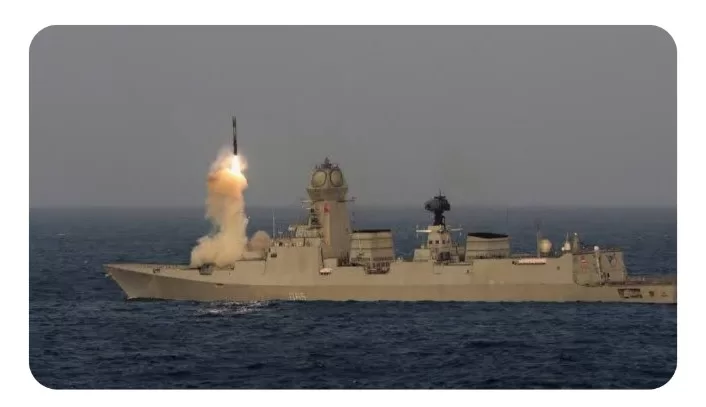In a significant setback, India’s plans to induct two Admiral Grigorovich-class warships into its naval fleet have been pushed back by at least a year due to Russia’s ongoing conflict in Ukraine. Originally slated for delivery in the first half of 2024, the two guided-missile frigates under Project 1135.6P/M are currently under construction at Russia’s Yantar shipyard in Kaliningrad, a semi-exclave in northern Europe, surrounded by Belarus and Latvia.
The delay is attributed to the slow progress in the construction of these warships, primarily caused by Russia’s focus on military operations in Ukraine. An Indian government official, speaking on condition of anonymity, revealed, “Earlier, COVID-19-related lockdown had delayed the warship construction in 2020, and in 2022 came the Ukraine war. These two are the main reasons for pushing the commissioning of the two frigates being built in Russia by a year.”
The Russian Federal Service for Technical and Military Cooperation (FSTMC) had initially committed to delivering the two warships by the first half of 2024, as announced during India’s DefExpo show in Lucknow in February 2020. While construction on the frigates persisted through the challenges posed by the COVID-19 pandemic in 2020 and 2021, they were launched earlier this year, indicating the integration of critical equipment into the warships and progress in outfitting work.
The Indian Navy has already named the crew for these two frigates, and these personnel will soon travel to Kaliningrad to join the warships. Following their arrival, the unit will assume control of the vessels, preparing them for commissioning and eventual deployment in the Indian Navy’s fleet.
The construction of these frigates is part of an intergovernmental agreement signed between India and Russia in October 2016. Under this agreement, Russia’s Yantar Shipyard is responsible for building the two frigates, while India’s state-run Goa Shipyard is tasked with constructing two additional frigates at its Indian facilities, with technical support from Russia’s United Shipbuilding Corporation (USC). The entire deal was valued at approximately US$2.5 billion.
The Admiral Grigorovich-class warships are an advanced variant of the Talwar-class frigates previously built by Russia for the Indian Navy between 2003 and 2013.
These frigates will be equipped with the BrahMos cruise missile system, featuring an eight-cell 3S-14E under-deck launcher. The BrahMos missile, a joint venture between India and Russia, is a potent supersonic anti-ship cruise missile. Additionally, the ships will carry vertical-launched 3M-54 Kalibr, another Russian-made supersonic anti-ship cruise missile, along with other armaments, including a 100-millimeter A-190 naval cannon, heavyweight torpedoes, and anti-submarine rockets. The frigates will also have a flight deck for deploying helicopters, particularly for anti-submarine warfare missions. Capable of cruising at a maximum speed of 30 knots, these frigates can remain at sea for nearly 30 days without needing to refuel at a naval base.
The induction of these two Admiral Grigorovich-class warships marks the last orders from the Indian Navy placed on foreign shipyards. With these additions, the Indian Navy has a total of 68 warships worth Rs 200,000 crore on order. The Indian Navy’s ability to receive warship deliveries has significantly improved, with one warship arriving every 18 months, compared to one warship every three years two decades ago. This enhancement in delivery rates is attributed to orders placed on various state-run and privately owned shipyards.
While India’s naval capabilities continue to expand, it faces a formidable challenge in the form of China’s rapidly growing naval presence. China has been constructing 20 warships annually across its 17 shipyards, quickly surpassing the United States to become the largest naval fleet globally, boasting 355 combatants or more. This accelerated naval buildup by China has raised concerns among nations in the South China Sea and the broader Indo-Pacific region, where China’s assertiveness threatens the supremacy of the US Navy and other maritime powers, including India.
Despite these challenges, the Indian Navy is committed to expanding its fleet to 160 warships by 2035. However, its ability to extend its strategic reach beyond the Indian Ocean region and the South China Sea remains a complex endeavor, given the geostrategic significance of regions like the Atlantic and eastern Pacific.




